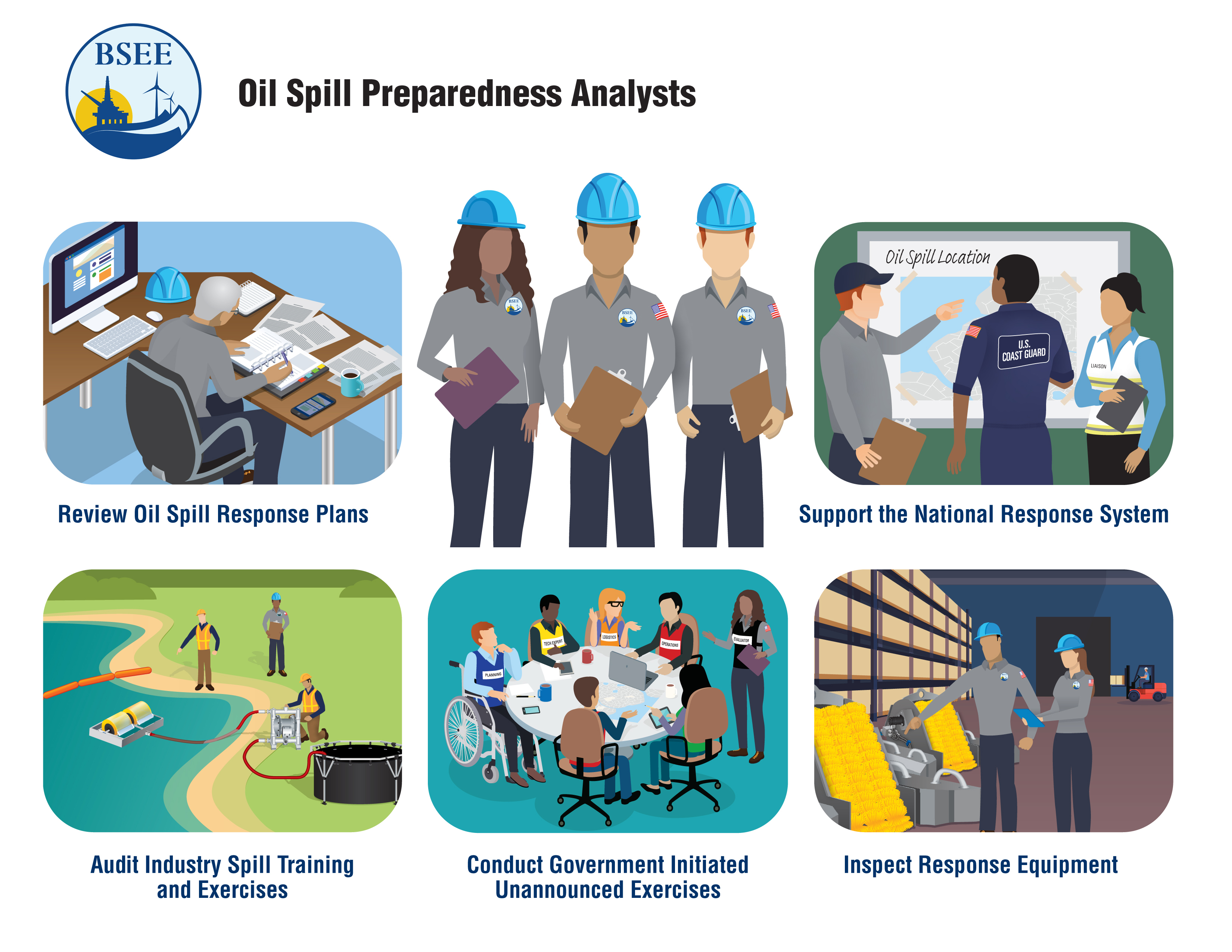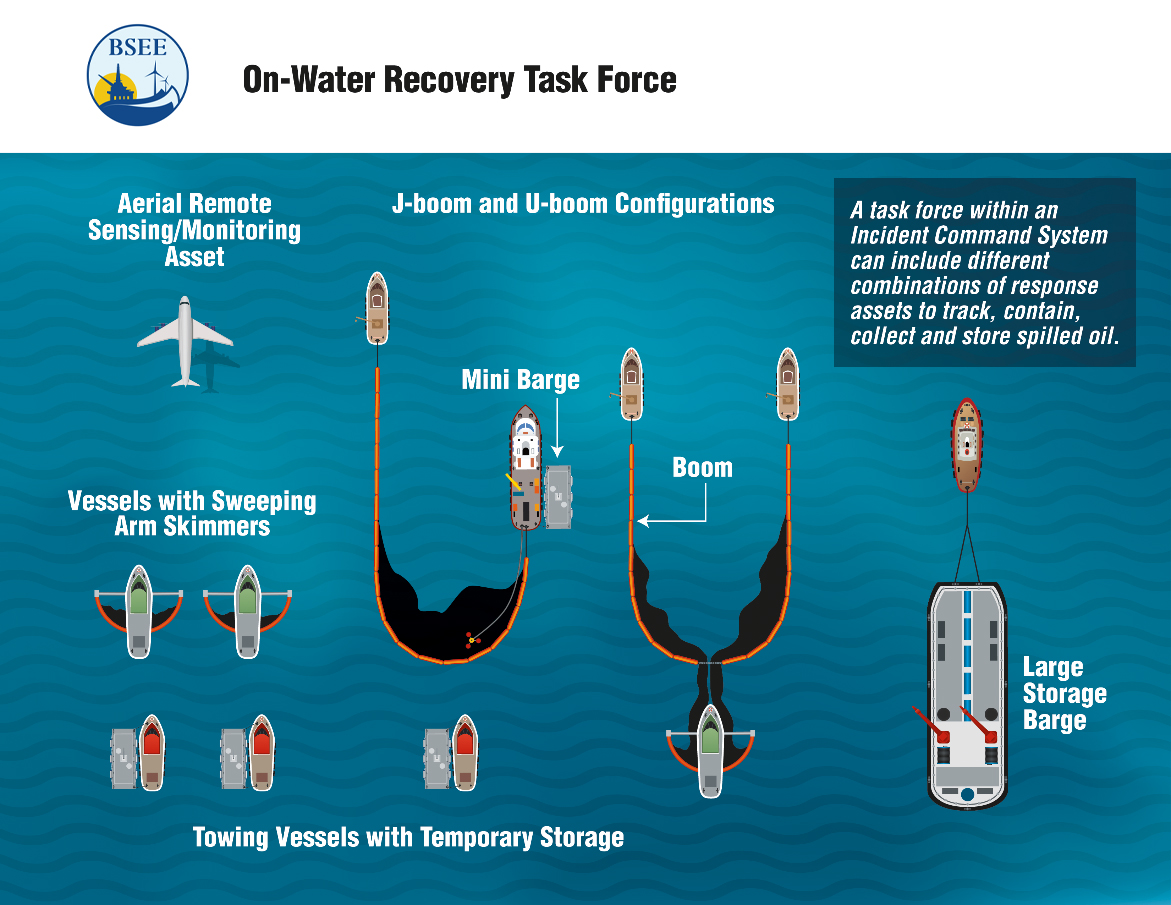Preparedness Verification is one of the three essential roles of BSEE’s Oil Spill Preparedness Program. BSEE must ensure that owners and operators of offshore oil facilities are trained and equipped to respond to oil spills from the time they drill their first well until the last platform is removed. The Oil Spill Preparedness Division (OSPD) administers the Bureau’s oil spill preparedness regulatory requirements for offshore facilities discussed in 30 CFR Part 254. In doing so, OSPD’s subject matter experts research, improve, and execute numerous important regulatory activities including:
- Reviewing Oil Spill Response Plans (OSRP) to verify that owners and operators of offshore facilities in both federal and state offshore waters are prepared to respond to a worst-case oil discharge.
- Inspecting spill response equipment listed in an OSRP to verify that it is in a state of optimal readiness.
- Conducting government initiated unannounced table-top and equipment deployment exercises to test an operator’s OSRP and their ability to respond to a hypothetical spill scenario, as well as:
- Auditing industry oil spill preparedness training and exercises conducted by offshore facility owners and operators to ensure that appropriate personnel are proficient in supporting an incident command and control organization, and operating response equipment.
- Supporting the National Response System through regular engagements with local, state and federal government partners, the National Response Team, Regional Response Teams, and Area Committees.
Many of these duties are executed by specialists known as Preparedness Analysts. To better understand these important positions, you can download this insightful infographic.


